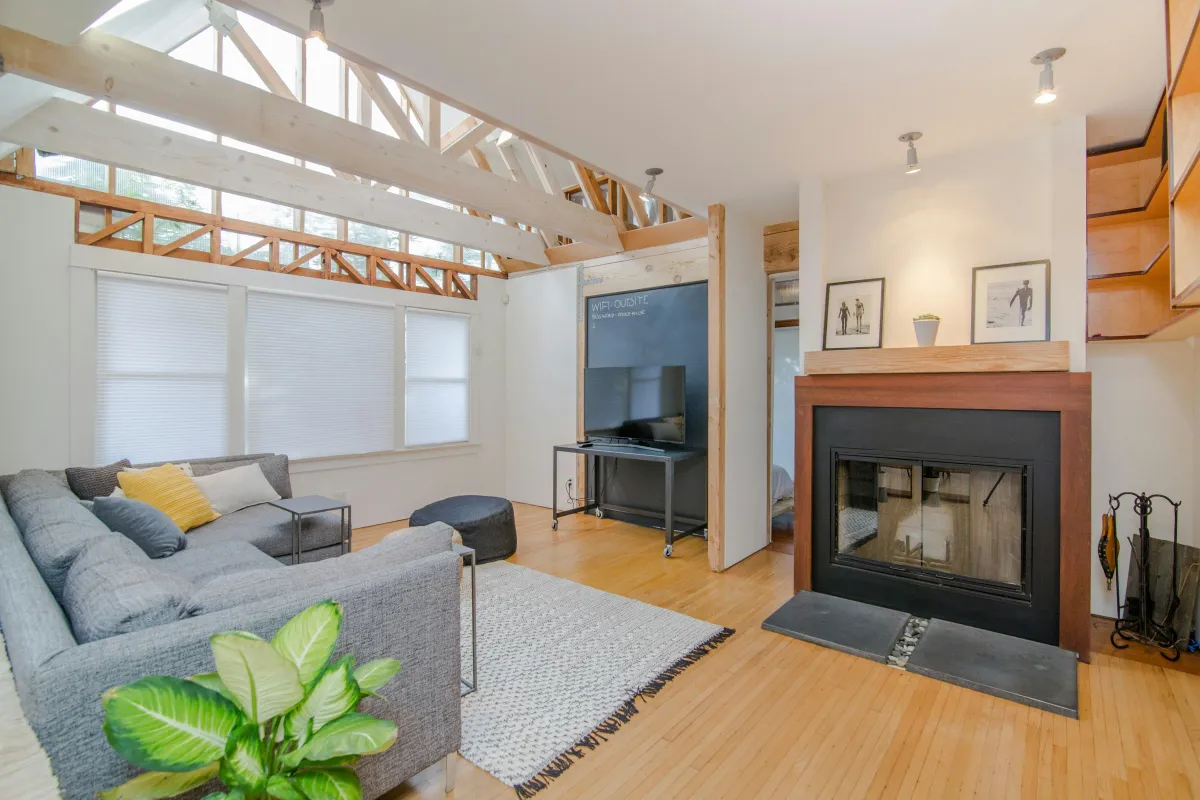
Sustainability with Energy-Efficient Construction Methods
Energy-efficient construction isn’t just a trend—it’s a smarter way to build homes that offer long-term comfort, lower utility costs, and reduced environmental impact. By using thoughtful design, efficient systems, and innovative technologies, homeowners can significantly cut energy use from the ground up. Whether it’s planning the layout to capture sunlight or installing smart thermostats and solar panels, every decision contributes to a more sustainable future.
Custom home projects that prioritize energy efficiency create healthier living spaces while reducing carbon footprints. These strategies not only benefit the planet but also lead to higher property value and long-term savings. From insulation to HVAC, today’s building methods make it easier than ever to design responsibly. Let’s explore how combining multiple techniques can transform any build into an efficient, future-ready home.
Key Takeaways
Early planning with site orientation reduces long-term energy demand.
High-performance insulation systems help maintain year-round comfort.
Renewable energy sources like solar and geothermal cut utility bills.
Efficient water systems lower operational energy use.
Smart technologies offer control, visibility, and future adaptability.
Why Thoughtful Planning Sets the Stage for Energy Efficiency

Energy efficiency begins before construction starts. Thoughtful planning strategies lay the foundation for a sustainable home by integrating solar orientation, site layout, and local climate data. Strategic placement of windows and rooms ensures natural light and airflow, reducing reliance on mechanical systems. Software-based energy modeling during design helps predict and reduce energy use. A well-planned build can significantly cut utility costs while boosting long-term performance.
Site Orientation Maximizes Natural Energy Use
Positioning the home based on sunlight patterns can drastically reduce heating and lighting needs. South-facing windows in colder climates help capture warmth in winter, while shading devices reduce solar gain in summer. Planning room layouts to align with daily sun exposure improves natural lighting and comfort. Trees and land contours can also be used to enhance energy efficiency passively. When homebuilders analyze the site early, they can design a layout that reduces artificial energy demands while improving indoor livability.
Passive Design Cuts Long-Term Energy Loads
Passive design features use nature instead of machines to maintain interior comfort. Incorporating thermal mass, overhangs, and cross-ventilation strategies helps maintain indoor temperature year-round. These elements require no operational energy, making them highly sustainable. By applying building science principles during design, passive systems minimize reliance on HVAC. Homes designed with passive strategies see lower utility bills and improved environmental performance. Early-stage planning is critical to optimizing these benefits.
Energy Modeling Tools Drive Smart Decisions
Architects and engineers now use energy modeling software to test different layouts, materials, and systems before construction begins. These tools simulate energy demand based on local climate, orientation, and design elements. Adjustments made at this stage—like changing roof pitch or insulation levels—can significantly improve outcomes. Modeling helps builders avoid costly redesigns later. It also ensures that decisions are based on data, not guesswork, resulting in a more efficient and sustainable build.
How Modern Insulation Supports Energy-Smart Homes

Insulation is a key factor in maintaining energy efficiency once the home is built. Modern insulation methods prevent heat loss in winter and heat gain in summer, reducing HVAC load. Materials like spray foam and insulated concrete forms create tight building envelopes. High R-value products block thermal transfer, keeping temperatures stable indoors. Properly installed insulation ensures comfort while cutting long-term energy costs.
Spray Foam Enhances Air Sealing
Spray foam insulation expands into gaps, sealing air leaks that other materials might miss. This reduces drafts, moisture entry, and temperature fluctuations. By creating an airtight envelope, spray foam helps HVAC systems run more efficiently. Closed-cell foam also adds structural support and moisture resistance. While more expensive upfront, it provides an excellent return on investment through energy savings. For those seeking maximum thermal performance, it’s a leading choice.
Continuous Insulation Reduces Heat Loss
Continuous insulation involves placing insulating layers across the entire exterior wall surface, minimizing thermal bridging. This method ensures that heat isn’t lost through studs, corners, or other weak points. Rigid foam boards or mineral wool panels are commonly used for this approach. Continuous systems work alongside traditional cavity insulation to provide uninterrupted thermal protection. By improving the building envelope’s performance, they help homes maintain consistent indoor temperatures with lower energy input.
Insulated Concrete Forms Boost Efficiency
Insulated concrete forms (ICFs) combine insulation and structure in one step. These forms are filled with concrete, creating walls that are both sturdy and thermally efficient. ICFs offer excellent soundproofing, fire resistance, and airtightness. Because they provide high R-values and reduce air infiltration, they lower heating and cooling loads significantly. ICFs are particularly useful in climates with temperature extremes. Builders favor them for their durability and long-term energy-saving potential.
What Role Do Renewable Energy Systems Play in Efficiency?

Incorporating renewable energy systems turns a home into a self-sustaining energy producer. Solar panels, wind turbines, and geothermal pumps reduce reliance on external utilities. These systems can meet a significant portion of a home’s energy needs. Early planning ensures proper integration for peak performance. Over time, renewable solutions offer both environmental and financial rewards.
Solar Panels Generate Clean Electricity
Photovoltaic systems convert sunlight into electricity that powers the home’s systems and appliances. When installed with proper tilt and orientation, solar panels can offset 20% to 80% of total electricity use. Net metering allows homeowners to send excess power back to the grid, lowering bills. Solar energy systems require minimal maintenance and last 25 years or more. With federal and state incentives, installation costs are increasingly affordable. Homes with solar often see increased resale value and long-term savings.
Wind Turbines Power Homes in Breezy Regions
Small-scale residential wind turbines are viable in locations with steady wind flow. These systems convert wind energy into electricity, complementing solar generation during cloudy periods. A well-sited turbine can produce enough energy to run essential systems or reduce overall demand from the grid. Although more site-specific than solar, wind systems add redundancy and resilience. When paired with battery storage, they ensure uninterrupted energy access even during outages.
Geothermal Pumps Regulate Indoor Temperature
Geothermal systems tap into the earth’s stable underground temperature to heat and cool homes efficiently. Ground-source heat pumps circulate fluid through underground loops to exchange heat with the soil. These systems can achieve efficiencies up to 400%, significantly reducing HVAC energy use. Though installation requires excavation, long-term benefits include lower utility costs and reduced maintenance. Geothermal is a low-emission, high-efficiency solution ideal for sustainable custom builds.
How Smart Water Heating Cuts Energy Waste

Water heating is the second-largest energy expense in many homes. Upgrading to efficient systems helps cut energy use and costs. Options like tankless heaters, heat pump water heaters, and solar water systems deliver hot water more effectively. These technologies reduce standby losses and operate only when needed. Smart controls further enhance efficiency by syncing with user habits. Choosing the right water heating strategy supports comfort and sustainability simultaneously.
Tankless Heaters Reduce Standby Loss
Tankless water heaters heat water on demand, eliminating the energy loss associated with storing hot water. They’re compact, efficient, and deliver continuous hot water when needed. Because they don’t maintain a tank of heated water, energy consumption drops significantly, especially in homes with lower daily usage. While installation may cost more upfront, tankless systems offer long-term energy savings and lower operating costs. They also last longer than traditional units, adding extra value over time.
Heat Pump Water Heaters Use Ambient Heat
Heat pump water heaters draw heat from the surrounding air to warm water, making them up to three times more efficient than conventional models. They work best in temperate spaces like garages or utility rooms. These systems are ideal for energy-conscious homeowners looking to reduce their carbon footprint. Some models come with hybrid settings for faster heating when needed. In addition to reducing energy use, they can help dehumidify their surroundings, improving overall indoor conditions.
Solar Water Heating Harnesses Free Energy
Solar water heating systems use rooftop collectors to absorb sunlight and heat water for household use. In sunny regions, they can meet up to 80% of a home’s water heating needs. When paired with conventional backup heaters, they offer consistent performance year-round. Though installation requires an upfront investment, the long-term savings and environmental benefits are substantial. Many systems qualify for rebates and incentives, making them a compelling option for homeowners seeking greener living.
How Innovation Is Shaping Future-Ready, Efficient Homes

Emerging technologies are pushing the boundaries of sustainable home construction. From smart automation to new building materials, these innovations enhance energy performance and adapt homes to future needs. Real-time energy tracking, predictive maintenance, and responsive systems allow homeowners to manage consumption like never before. As tech evolves, homes become more efficient, comfortable, and intelligent. Building with tomorrow’s tools ensures lasting sustainability.
Smart Systems Enable Energy Visibility
Smart home systems allow users to monitor and control lighting, HVAC, and appliances through connected platforms. These tools provide insight into usage trends and highlight inefficiencies. Features like scheduling, remote control, and automation help reduce unnecessary energy draw. Integration with renewable systems enhances performance and promotes self-sufficiency. By increasing energy awareness, smart systems empower homeowners to make data-driven adjustments that reduce costs and environmental impact.
High-Performance Windows Improve Thermal Control
Advanced window technologies—such as low-emissivity (low-E) coatings, gas-filled panes, and triple glazing—significantly reduce heat loss and solar gain. These upgrades help maintain consistent indoor temperatures and reduce reliance on HVAC. High-performance windows also block UV rays that can fade furnishings and increase cooling loads. Choosing the right glazing for the local climate maximizes efficiency. These window systems complement insulation and orientation strategies to create a holistic thermal envelope.
Future-Proof Materials Adapt to Change
Materials like phase-change insulation, recycled steel, and green roofs are redefining sustainable construction. These products respond to temperature changes, minimize waste, and improve environmental performance. As building codes evolve and climate demands shift, future-ready materials ensure homes remain compliant and efficient. Some also improve durability, reducing the need for costly repairs. Embracing innovative materials means designing for performance today and adaptability tomorrow—essential qualities in an energy-conscious custom home.
Frequently Asked Questions
Are renewable energy systems cost-effective in custom home building?
Yes, renewable energy systems such as solar panels and geothermal heat pumps can significantly reduce utility bills and may pay for themselves over time through energy savings and tax incentives.
What HVAC technologies provide the best energy efficiency?
Modern HVAC systems like heat pumps, ductless mini-splits, and energy recovery ventilators (ERVs) are among the most energy efficient, often achieving efficiencies over 300% compared to traditional systems.
How do smart home technologies contribute to building efficiency?
Smart home automation and energy monitoring devices enable real-time adjustments in energy use, optimizing consumption patterns and reducing excess usage, which can reduce heating and cooling costs by 10-15%.
What advances in water heating can reduce energy consumption?
Technologies such as tankless water heaters and solar water heating systems reduce standby losses and heat water only on demand, which can lower water heating energy use by up to 40%.
Can emerging technologies be integrated into existing homes?
Yes, many smart home devices, low-E windows, and retrofit insulation solutions can be integrated into existing homes, allowing for efficient upgrades without complete reconstruction.
Conclusion
Building an energy-efficient home is about making optimal choices at every stage of the process. From the first design draft to the final installation of systems and technologies, each decision shapes how a home performs for decades. Incorporating advanced insulation, renewable energy, and smart automation doesn't just lower bills—it also improves comfort and environmental responsibility. Homeowners who invest in sustainable methods today build homes that are more durable, efficient, and valuable tomorrow.
As technology and best practices evolve, the opportunity to enhance sustainability grows stronger. Whether it’s a modest change like a smart thermostat or a full integration of geothermal systems, every step counts. By blending innovation with intention, anyone can create a home that’s both energy-smart and future-ready. Sustainable construction is not only practical—it’s the foundation for better living.


